-
Posts
513 -
Joined
-
Last visited
Posts posted by Richard Tuohy
-
-
FS: Blackmagic Intensity Card HDMI Capture
It has the original box and was used for a project, that meant it had about 3 hours use.
I no longer need it, hence the sale.
I take Paypal and you can check out my ebay feedback by looking up username oceanzen - If I don't sell it here - I'll stick it on eBay
£115 inc postage to UK and Paypal fees
Thanks
Ocean
Hi Ocean,
just checking, this is the HDMI ONLY version of the Intensity card, not the HDMI and analogue?
cheers,
richard
-
Hi Ron,
I bought some of that Fuji stock from the ebay seller in Bulgaria. Very cheap and an easy going transaction. I shot 100' in a bolex on my JK printer. I wanted to try this stock out for enlarging super 8 to 16. The results where o.k.. There was slight fogging, not problematic. Colours came out a bit odd with the one light work print I had made ... but I think basically the stock was o.k.. It was too grainy for the super 8 blow-up though.
I think it is worth buying on balance.
cheers,
richard
-
My German skills are lacking because of historical leanings (we can't talk politics on this site so I'll just end that here), but even without speaking German, what's the one thing here that doesn't make sense for a Yankee:
--------------------------------------------------------------------------------
Wittner: CHROME F64T
Hergestellt auf Basis von Fujichrome T64 Professional Film
16mm Kameraspule 30m / 100 ft., einseitig perforiert
ISO 64/19° Kunstlicht (3200K, ohne Filter)
ISO 32/16° Tageslicht (5500K, Filter Wratten 85B)
Entwicklung (E6) im Filmpreis nicht eingeschlossen.
Best.-Nr. 2139 - (41.93 EUR netto) 49.90 EUR brutto
-------------------------------------------------------------------------------------
Did you spot it?
Guess what 49.90 Euros for 100' are in American bucks:
Way too MUCH.
Hi Ira,
actually you would pay the 41.93 Euro 'netto' price - that is, without tax. But I agree it is sadly a bit too expensive. Whenever I have contemplated using it, I end up opting for cheaper alternatives. I like shooting reversal. I'd probably use blue gels on the lamps. But an 80 filter and shooting at 25asa would also be fine, especially if you are in a controlled situation and can light until you have enough to shoot. But you could also choose a tungsten colour neg stock and get a work print. I do this a lot and shoot the neg like reversal ... expecting that if the exposure isn't right in camera, then it will be wrong on the one light print ... so I just take care, as we reversal shooters do.
cheers,
richard
-
I'm trying the same process (Tri-X and Plus-X S8 developed in Microdol-X 1:3 for negatives) and I'm wondering if anyone has a time/temperature suggestion or a way to get the Anti-Halation layer off. Thanks a lot.
-R
Hi Ryan,
there is no issue with anti-hallation layers with these two stocks processed as neg. I can't help with the times, as when i process them as neg I use d76. But all you need to do is:
develop
stop (or just wash)
fix
wash
I also use hypo eliminator ... but that isn't necessary, just make sure the post fix wash is good and long.
richard
-
A sad update.( i cant get away with it in transfer)
I projected one film and the near the perfs and some area more is normal. The rest is green.
So i guess the spiral reel protected it somehow.
So what happened? Any ideas?
This is an odd one. For it to happen to both the top and the bottom films (not just one of these) means that it is a chemistry/temperature/time issue, rather than a spiral loading issue ...
Yes, if the edges of the film that were in the spiral tracks weren't badly affected, it certainly sounds like the spiral protected those areas. If it was just one film affected and you had this sprocket edge affect, then I would suggest the problem had something to do with the film collapsing onto itself in the spiral such that it was touching and that the chemistry or washes didn't get to the film properly.
Certainly when you look at unprocessed tri-x reversal the back side of the film is green. I would take a small piece of this film and re-fix it to see if you can make a difference this way ...
cheers,
richard
-
Yes, K-3 camera have forward trace only.
But, if you need re-winding ( running of film in reverse ) or unwind film at short distance for trick effects, i recommed russian 16 mm cine camera Kiev-16UE.
Kiev-16 UE have electrical motor with forward and reversal trace, have two film counters, at meters and at frames.
The first edition of russian 16SP camera had reversal trace too, but, the filmmagazines had problem at reversal winding and next edition of camera lost of this function.
Kinro-16 SX-2M can be run at reversal trace too.
Hi Olex,
indeed this image was made using a Kiev-16-UE and double exposing with a mask in front of the lens:
from my film 'ironwood'.
In fact, you sold me the sprint motor for this camera (but it is only with the electric motor that it can run in reverse).
many thank,
richard
-
I guess a $200 camera has its limits, especially since these kinds of effects are done in post anyway.
What exactly do you want to do?
Hi Ira,
back-winding has loads of applications. Here are some examples from 4 of my films... I might multi-expose material with different coloured filters on the lens ...
from my film 'RGB'
or use mattes for various split techniques ...
from my film 'dead pan'
or double expose silhouetted images onto hi-con negative which leaves image only on the overlap of the two images ...
from my film 'tree lines'
or a combination of these ...
from my film 'zoom tube'
these are just a few examples, but there are loads of possibilities. Yes, all of this can be done 'in post' ... which usually means 'on video' but could mean on a JK optical printer or similar (as I sometimes do on mine) or else it could mean 'in DI' if you had loads of money ... but for film makers who like to project film, then 'in camera' is a nice, traditional way to go... and it saves the generation loss of using a jk printer etc (which not many people have anyway).
Actually, I have half an eye on running some 'nano lab' film courses. Yes, the cost of K3 cameras and what you get for the money, is unbeatable value, especially if you want one per student (indeed the K3 would really make this possible for a lot less than a set of working bolexes). I love my K3, though I don't use it much because it can't back-wind.
I was looking at my k3 today and found that it is possible to rotate the sprocket drive with your thumb a tiny bit in the opposite direction ... maybe just a frame or two. I wonder if there is a simple 'one way' cog that could be modified allowing the k3 to be hand wound backwards in the say way that you can hand crank forwards (if you replace the winder with a crank that is). but thinking about it, you would also have to be able to disengage the motor or else back winding would effectively be 'unwinding' the spring ... or something ...
... any one have any thoughts on this?
cheers,
richard
-
Hi all,
The biggest disadvantage of the K3 for experimental film makers over using a bolex, is that it has no mechanism for re-winding film. Has anyone ever considered ways this might be possible?
cheers,
richard
-
I Purchased a Quarz Kinoflex wind up cam from ebay maybe 12 months ago. It had never been used, and I have not used it until now.
Im getting ready to put my first rolls of super 8 film ever through the cam, but before I waste my Ektachrome 64t there seems to be something odd about my kinoflex
When I run the cam at low speed (9-12) and look into the gate, there is an obstruction over the inmage coming from the left hand side. Kind of like a thick needle with a blunt end. Sometimes its right in the middle, and sometimes its up or down a bit.
Then after some messing, the image in the gate becomes very small (ie not filling the gate), its only filling a small circle in the centre of the gate.
Ive run the cam very briefly at higher speed, and its the same.
Is my cam broken?? If so, what is wrong and can it be fixed??
Many thanks
Jim
Hi Jim,
I believe what you are seeing is the 'iris' system of this camera. Many super 8 cameras have a 'two leaf' 'iris'. This is two triangular openings that move against each other in response to the light. In doing so, they make a variable sized square opening. You can simulate this to see what I mean by making a 'V' with two fingers of each hand and superimposing them.
Now the Quarz camera uses something similar but different to this. Instead of two triangular (V shpaed) openings it has one 'wonky' shaped V. This doesn't move but is 'fixed' in position. Into this protrudes a single 'finger' which obstructs the light. This finger moves in and out depending on the amount of light (or the exposure setting when on manual). It is this system I believe you are seeing. And this is an odd looking system! Sometimes when you get a flare in the lens you can see this odd shaped 'iris' system in the image (as you can with any other iris system). It looks very weird. But it is probably working. Just test to see that when you have batteries in the battery holder the exposure device I have described moves about depending on light.
enjoy your quarz! Its a special camera.
richard
-
Ron - previously at UT Photo.
Now he works at his own shop.
He has repaired my Canon 1014XL-Cameras.
Good work.
He can make it run - often
He can repair the eyepiece dial
This is poetry ...
-
Watch out though as the B/W stocks don't have a rem jet backing. And when you use them with the SR3's all metal and shiny pressure plate, you can get seriously washed out and halated footage in bright environments. Many Aaton's have a striped pressure plate, which is even worse.
I never thought of this! Must do it some time.
Anyway Adam, looks like the answer depends on the surface of your camera's pressure plate. This is not a super 16 thing for black and white, but rather a camera thing. But yes, you would have to go out of your way to get a double per black and white stock, so any normally acquired bw will be single per (ie., '1R') so will work with super 16. Out of the choice of kodak bw neg, in my opinion, go for 7231 plus-x.
-
Many thanks for the info and ideas above. I bought the camera in Sydney but I've relocated to China recently and there's no camera shop that sells 8mm related stuff here, neither do filters of super 8 camera's size. So most likely I have to take the modifying-notch option that Richard suggested above. There are two notches and I wonder if the asa notch is the upper one, and do I just stuff the upper notch/hole with paper and put tape on the cartridge on the side followed by inserting the film into the camera? Also, does that work with both daylight and tungsten? (sorry if my questions sound stupid as I am a total beginner who hasn't filmed anything super 8 yet). Thanks so much again.
hi monchacha,
the speed notch is indeed the largest notch, which is the upper notch. Take a look inside the camera where this notch would go if you inserted a cartridge. Where the notch would line up you will see two little pins that can be pushed in. These are the asa (film speed) detecting pins. The outcome you want is for all the asa pins to be pushed in. This is 40 asa tungsten 25 asa daylight. So block that speed notch with somehting (perhaps a ball of paper ... some of my customers who smoke use cigarette filters) and put a piece of electrical tape over the notch (to make the face of the cartridge smooth). It is probably the case the tape alone would do the job, but I prefer the tape supported by something like paper.
Yes, this works with daylight and tungsten. You haven't affected the so called 'filter' notch which is the lower notch on the cartridge so the camera's filter works as normal. I think the 310 might have a filter switch on the outside of the camera for switching between daylight and tungsten. If so, use that as intended. If it doesnt' have such a switch, it will need either a 'filter screw' or a 'filter key' ... ask about that if you need to.
How many rolls are you going to shoot? If its 2 or so, why not send them down to me (nano lab) for 'pull' processing to 40 asa? If the camera is working properly, then this will give a normal result. But it is a big IF of course... You might just have them processed as 64 as the results shouldn't be too far wrong.
good luck,
richard
-
Hi I am new to the super 8 world. I got a canon 310 xl and kodak ejtachrome 64t film recently but only to find later from the internet that the camera won't read the 64t film properly.
There is no exposure compensation option in the camera, neither can I adjust the aperture/shutter speed so I wonder if there's any way to expose correctly indoor and outdoor with that camera? Is there anything I can do about it? What will happen if I just shoot the film as is in daylight and tungsten condition?
I got a friend's wedding to shoot this week and will appreciate anyone's help in giving me a clue as in how to go about shooting with this camera and film combination. Thanks a lot in advance.
Hi there monchacha,
There are two alternatives you can do to shoot 64t in this camera. All this of course assumes that the camera is working as it was intended. Do remember that this is an old camera and the light meter may have drifted anyway. But here goes:
With this camera the light isn't metered through the lens but through its own light meter 'lens'. This is useful. Also, this camera will usually read 64t as 160 rather than 40. One option you have is to block the asa notch on the cartridge such that the camera will detect this film as 40 asa. The asa notch is the larger notch on the cartridge. It can be blocked with a piece of tape with a ball of paper etc behind it. So now the camera will think the film is 40. Actually the film is 64. Because the light meter is separate from the lens (ie is not a TTL light meter) you can put a 2/3rd stop ND filter on the lens. A 2/3rd stop nd is often called a '.2 nd'. This will effectively result in a speed reduction of your film to 40. This means you are in business. If you can't get a 2/3rd ND filter, you can use an 85b (or c) filter (which is orange in colour) and switch the camera's filter to 'tungsten' (bulb). This won't work for shooting indoors though.
The second option is to put a 1 and 2/3rd ND filter on the light meter lens. A 1 and 2/3rd stop ND filter is often called a '.5 ND'. With a filter on the light meter lens, the amount of light is reduced to the sensor, so the meter reads more 'open' which is what you need.
Both these options involve buying extra filters. You could just do the asa block trick with the tape such that the camera believes the film is 40 and shoot with a 2/3rd stop over exposure.
good luck with it,
richard
-
hey guys my uncle found this camera in his garage and said I could have it but with one condition. that i found the film for it.
so my question is (obviously) that does anybody still make the film for the camera? it would be awsome if somebody could help me because this camera seems to be in pretty good shape!!
thanks in advance!!!
hi sean,
this camera takes super 8 film. Yes, this stuff is still available. Actually your camera is a sound camera and there is no sound film any more, but it also takes normal silent cartridges ... so get some and shoot!
There is an exposure issue with this camera with regards shooting with 64t ektachrome (which is the main colour reversal (ie positive) film available). There is an easy trick to shooting with a bauer however ... have a look at this link from my lab web site:
http://nanolab.com.au/shoot_ektachrome64.htm
You can shoot with tri-x black and white, and also with vision 200t colour negative.
buy directly from kodak or from a photography store.
cheers,
richard
-
Ok so let me get this straight, the takeup in the camera is turning steadily and it is pretty tough to stop with a finger. BUT when I've checked a film, especially I remember the first cartridge, I noticed that the emulsion had been scratched away by the claw, so it wasn't pulled forward AT ALL. As far as I'm getting it, the takup should have pulled the film forward, right? Now, shouldn't this mean, that the film is so stuck, that even the takeup can't pull it along. Or am I wrong?
This all makes sense to me. What happens is that you get a loose winding on the take up side of the cartridge because the core isn't being turned properly. The take up side of the cartridge is only as wide as it needs to house the width of 8mm film wound nicely. If take up isn't working, then after a while the disorganised film (be it just jumbled up, or wound up but wound wonkily) means that their isn't space for more film to go in, or the wonky wind means that the film is rubbing excessively on the inside of the cartridge. This can result in not just excessive friction, but a complete jamming of the interior. In either case, when no more film is being taken up, no more film can be pushed down by the claw. The claw will then either be stopped (and the camera jam) or a sprocket will tear, or the claw will push the film out of the way. In the latter two cases there is always signs of scratching.
-
Well, I've sent Dwayne's a message now, you're right, they only sell E64t, but I've asked them to forward my complaint to Kodak, in the hopes that it will mean more to Kodak coming from Dwayne's than from me. For some odd reason I doubt the consumer service Kodak delivers to Super8 users.
Btw. I use a Nizo 156 macro, which I bought from a trusty guy who also repairs cameras, so I do believe it was checked out before being sold, if it weren't I'd probably think it's the camera, but since I've also noticed that every time the film gets stuck it feels kind of hard to pull forward an inch or two, like it's sticking somewhere. Then again, I could try that one suggestion of carefully hitting on the cartridge a little. What I have been doing on the last few carts was forwarding the film by hand until I passed the two points where it was bent somewhat (to give you an idea, at that point if I didn't press it down you could see it rising above the pressure plate. Maybe that's the result of a lot of heat acting on the film threaded around those little guide rollers or something? Believing that carrying the film around in my backpack all day at 100ºF or more might have hurt it, but then again, I didn't carry around all cartridges. You guys may enlighten me, if any of this sounds plausible.
Just saw your post there Richard... you're right, I don't want to hear that. If anyone could confirm or dismiss that claim (please please don't confirm it, where the hell am I going to get the cash for another camera, and with a project coming up?)
The thing is alessandro, thousands of people are using 64t and not having this problem. A major issue with the super 8 system is the reliance on the tension of a slip clutch inside the camera that turns the take up core. This core turning device has the same force applied to it by the camera motor no matter what the diameter of film on the take up core. This means it has the same force applied to it regardless of the revolution speed required. As such, the force required has to be just enough to take up loose film, without being enough to pull film harder than it is being pushed down by the camera claw. The claw has to be the only thing that actually advances the film. The slip clutch that is connected to the core is like that on the take up side of a projector. You can stop the rotation of the take up spool of a projector without stopping the projector. Again, its a slip clutch that makes this possible. And like with a camera, if the clutch isn't tight enough, the film won't take up, and if its too tight, you have the film being pulled through the projector and the projector loops dropping etc. Most often what goes on with film jams inside a super 8 camera is the take up core not having enough force applied to it to turn and thus the film just loosly fills up the inside of the take up side of the cartridge until no more can fit in. Sometimes the core will wind, but not smoothly such that you get a wonky wind. A wonky wind takes up too much width and starts to rub on the inside of the cartirdge causing increased friction etc. This eventually gets to be too much for the claw to keep pushing film down and again you have a jam. Its a bugger of a system. Much better is the single 8 system ... but that is a debate for 1965!
I am afraid you should try another camera and save that one perhaps for black and white ...
good luck,
richard
-
Guys, I'm really starting to lose it here, why does EVERY SINGLE CARTRIDGE I film with get, at some point or another, stuck? At first I didn't even notice, but now I've had that problem so often, with so many cartridges, that I can perfectly hear the barely noticeable sound in my camera. I can't even put in a fresh cartridge without moving the film forward a few inches, because I KNOW that at the beginning it ALWAYS gets stuck, probably because it is a bit bent, I assume because of being around the guide rollers inside the cartridge. Hope you understand what I mean. But anyway, that's not the point. The point is, that I've shot quite a few cartidges, all of them E64t, and all of them got stuck at some point or another. Just like that. Even while I was shooting I suddenly heard a pitch change in the sound of the camera and noticed that the cartridge had gotten stuck. I mean... come on, is it so hard to get working cartridges out there? It was possible in 1965, WHY THE fu** IS IT NOT fu**ING POSSIBLE IN TWO THOUSAND fu**ING EIGHT??? CAN SOMEBODY PLEASE EXPLAIN THAT TO ME? If this goes on, I have little more option than to consider using video, I don't want to risk loosing a shot just because some GOD-fu**ING-DAMN RETARDS AT KODAK ARE TO fu**ING MENTALLY DEFICIENT TO MAKE WORKING SUPER8 CARTRIDGES.
Ok, got that out of my system....
PS: ...damn autmatic censorship...
you probably don't want to hear this, but to me it sounds like a camera issue. I would say that your camera just isn't up to running 64t anymore. As you know, its slightly thicker than black and white or kodachrome. this difference makes 64t more demanding for your camera.
-
Yep. I need a couple of sets of weighted rewinds. I have plenty of the unweighted kind, but I need some with weights ... anyone want to sell some?
cheers,
richard
-
What's the most common way to get 16x9 images with Super 8? Should I file the gate wider or are there better options in post. I've seen quite a bit of vignetting in Max8 footage and would like to avoid that.
Hi Ryan,
As you no doubt know, your choices are:
super-duper 8
anamorphic super 8
crop in post.
The most reliable results that I see are the latter.
It is rarely pointed out that the super 8 frame had to be cropped a little at the sides to fit in the standard video frame. Personally I think the loss of the top-bottom crop is over-stated... its not much more that the side-side loss that occurs in standard video transfers. Yes, its more, but I argue not much more. Of course, if we could readily increase the frame and reliably access non-vignetting lenses and avoid sound-stripe edge scratching, all systematically, then an enlarged picture area is a much better approach. But if that is what you want, shoot super 16 from short ends...
cheers,
richard
-
Film sensitivity
(1) ASA 40, 160 (Type A film),
(2) ASA 25, 100 (Daylight film)
(3) Film sensitivity is automatically set by cartridge
Filter
(1) Built-in Kodak Type 85 filter.
(2) Built-in filter can be brought out of place through the movie light spocket for improved exposure sensitivity.
(3) Dia. of external filter:55mm.
Kodachrome is out of production and it is harder to get each day. I want to use Ecktachrome!
Hi there,
if the camera still works as intended then on auto exposure it will over expose 64t ektachrome by 2/3rds of a stop. But only by shooting a test will you know for sure. It is just as likely to give any other result given its age, so shoot a test and see ... maybe its o.k.
But according to the specifications, you can use 100d ektachrome on auto. You can also use vision 200 on auto ... the camera will expose it as 160 (if working correctly!!). That is fine. No, you shouldn't use 500t on auto as this camera will expose it as 160.
So shoot a test roll with ektachrome 64 and gauge what the meter is doing. If you shoot a test carefully, you could then use the results to know how to set the meter on manual for other asa speeds.
cheers
richard
-
Hi,
I know it'd be easier to just manually set the exposure but I want to check if it works. It's called "Exposure Adjustment Control" in the manual. I just can't turn the ring. Is there a lock?
Thanks in advance.
hello sasithorn,
no, there is no lock. Just use force. They are firm at the best of times, but sounds like yours is firmer than it should be. This exposure compensation control is on of the great features of an R10. It allows you to compensate for a drifted exposure meter, but also for double exposure or rating a cartridge differently to how it is notched etc.
so just use force - it shouldn't break.
cheers,
Richard
-
Apparently, it's Single-8.
... which, as far as the projector is concerned, means 'super 8' too. These Gaken units could be an idea for an art installation somewhere. Must buy some ...
rt
-
Hi Molly,
it takes 4 x AA batteries. It doesn't need any other batteries.
I believe Sankyo cameras of that period could read all possible super 8 asa speeds, so it can take any film.
Try a roll of Ektachrome 64t to test it.
There are tips and explanations on my web site about some camera basics. nanolab.com.au
good luck with it,
Richard
Hello thereI have just found a Sankyo Super CM 400, it looks like it is in good condition but there is no manual. I would love to get it working, but have no idea about how it works, what film it takes or what type batteries it needs.
Is anyone able to help get me started, I am new to all this and indeed to posting questions...any help would be very much appreciated!
:unsure:
-
 1
1
-
-
Looking at my test footage from a Canon 814 XL, and it's only in focus at the wide end of the zoom. When I zoomed in the focal depth went way down, so only the stuff in the foreground was in focus.
I didn't see this in the viewfinder, and my upcoming project involves a lot of med-long lens stuff, so does anyone have any idea how to adjust the backfocus on this camera? Or other solutions? Or am I just SOL?
Hi andrew,
because super 8 cameras (with very few exceptions) use an aereal image viewfinder system rather than a ground glass, you have to take a lot of care with focus. It is IMHO very unlikely that the lens has been adjusted such that it needs fixing. Much more likely is that the eye piece diopter is not correctly set, and/or you didn't rely on the focus aid strongly enough. Yes, focus is much more critical the longer the lens is (ie less 'wide'). The longer the telephoto lens, the more care you have to take. And you can't simply rely on apparent image sharpness in the viewfinder - you have to use the split image focus aid. Remember, your eye can readily 'pull in' or adjust for a soft image in the viewfinder since it isn't looking at a ground glass at a fixed location, but rather just the aerial image which is merely 'floating'. So, make sure you have focused the eyepiece dopter. Do this:
zoom all the way in
focus on infinity
choose a vertical subject as far away as possible (well over 15 meters away) such as the side of a building.
with your fingers on the diopter focus control, adjust the diopter until the two halves of the split image focus aid are in exact allignment.
now you are ready.
And use the focusing aid in the same way on subjects when filming - especially if they are in the middle distance and you are using a longish lens.
And you can always use a tape and the distance markings on the lens. These will be correct, unless the front element of the lens has been removed at some point.
good luck.
Richard




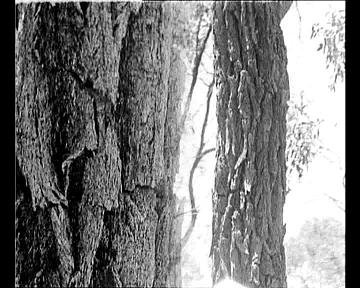
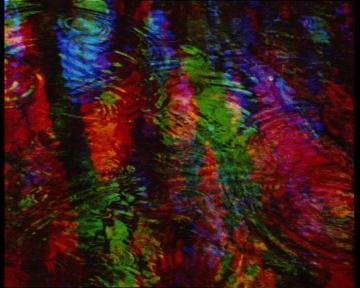
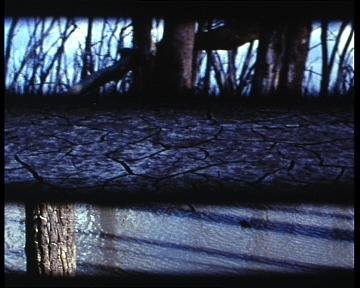
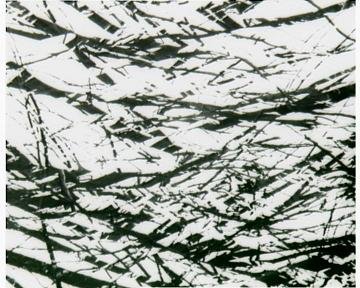
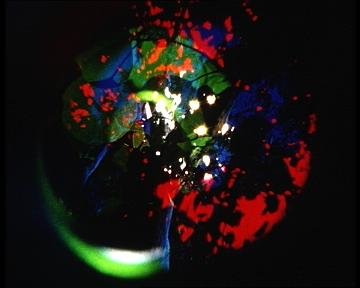
Some questions...
in Bolex
Posted
Hi Matt,
I think that was one of the bolex auctions I was 'watching'. I noted that it wasn't a reflex camera at the time. If it has the lable 'Bolex H16 M', then it probably is an M-5 (since it has the 400' shoe). Best way to tell will be by checking the serial number against the bolex collector list: bolex collector
It is probably the case that the front single c-mount plate was changed at some point for a turreted front. Does the camera have a filter slot by the way? It would seem that the M bolexes didn't.
Best thing would probably be to get a lens with viewfinder and leave it at that.
cheers,
richard